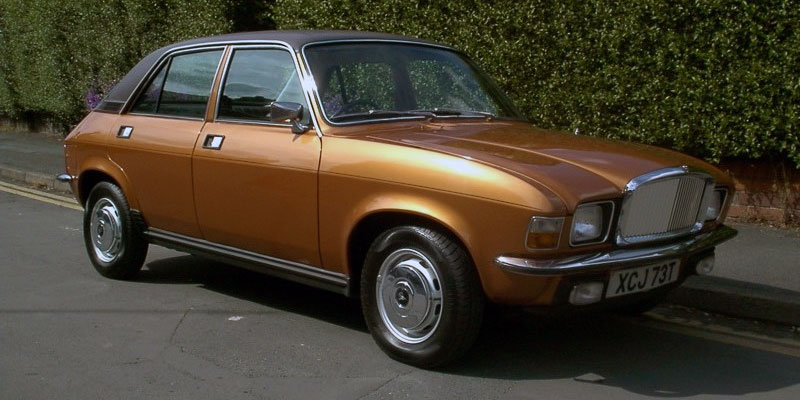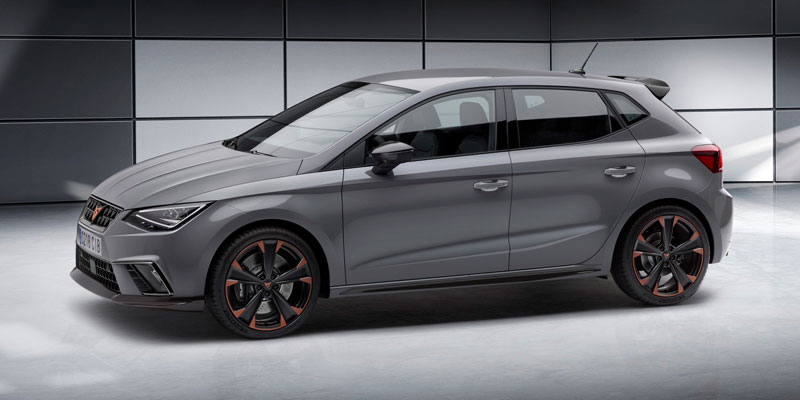 The past few years have seen a re-emergence of a long-dormant trend – for mainstream brands to launch dedicated sub-brands. The most recent example of this trend is Seat’s new Cupra sub-brand, which is heading to Geneva with the Cupra Ateca, a Seat Ateca with the Volkswagen Golf R’s 4wd drivetrain, and the Cupra Ibiza Concept, in essence Seat… ahem, Cupra’s take on the new Volkswagen Polo GTI. Other recent examples of sub-brands include Fiat’s resurrected sporty Abarth sub-brand (the model Cupra most-closely follows), Volvo’s Polestar EV sub-brand, Ford’s attempt at going “premium mainstream” with the resurrected Vignale and Buick’s similar play with Avenir and, before it was spun off as a stand-alone brand, Citroën’s DS.
The past few years have seen a re-emergence of a long-dormant trend – for mainstream brands to launch dedicated sub-brands. The most recent example of this trend is Seat’s new Cupra sub-brand, which is heading to Geneva with the Cupra Ateca, a Seat Ateca with the Volkswagen Golf R’s 4wd drivetrain, and the Cupra Ibiza Concept, in essence Seat… ahem, Cupra’s take on the new Volkswagen Polo GTI. Other recent examples of sub-brands include Fiat’s resurrected sporty Abarth sub-brand (the model Cupra most-closely follows), Volvo’s Polestar EV sub-brand, Ford’s attempt at going “premium mainstream” with the resurrected Vignale and Buick’s similar play with Avenir and, before it was spun off as a stand-alone brand, Citroën’s DS.
A bit of history
This kind of sub-branding used to be popular in the past, especially in America where the line between proper stand-alone brand and sub-brand was blurry in the 1950s and 1960s. As brands and sub-brands consolidated in the 1970s the practice died down, driven partly by the rising expense of developing safe, unibody cars that were harder to customize than their body-on-frame predecessors. The practice would pop up occasionally in the following decades, for example when British Leyland desperately tried to charge more for their crummy 1980s offerings by slapping on the once-coveted Vanden Plas badge. To best understand why this strategy failed miserably, just look at the sad Austin Alegro Vanden Plas, with it’s ridiculous fake-Rolls grille.

The practice to create sub-brands somewhat re-emerged when in 1999 GMC launched the Denali sub-brand, which became a surprising success in the two decades that followed (today, about 25% of GMC models are Denalis, complete with added chrome and luxuriously-stiched leather interiors).
Kriss’ take on sub-brands
Personally, I don’t understand the need for brands to spin off sub-brands. Yes, the example of Denali shows that, sometimes, there is an untapped market among consumers for an upscale or sporty version of a brand’s offerings, but Denali is not really a full-blown sub-brand. Rather, it’s a top-end trim label that’s available on all models, maybe slightly more removed from the base offerings than at other carmakers, but ultimately still not a sub-brand. To me, a sub-brand is one where the brand logos are replaced with the sub-brand’s (think Abarth, Cupra, Polestar), and the cars are sold through either dedicated dealers, or a small sub-group of the main brand’s dealers.

But, outside of these semantics, to me a sub-brand is a no-win middle point – either the cars are lightly modified versions of existing offerings, in which case you run the risk of “putting lipstick on a pig”, or they are stand-alone models, in which case they would probably be better served by being spun off as a new brand entirely. For examples of the former, look no further than Ford’s unsuccessful Vignale, which shows that customers are not easily fooled by nicer (and in Vignale’s case, browner) leather, chrome wheels and all the equipment that is optional on the mainstream cars. For examples of the latter, notice how once Citroën started developing bespoke models for its DS sub-brand, or Hyundai for its Genesis sub-brand, both quickly realized that it makes more sense to distance them from the mainstream models and turn them into proper stand-alone brands.

Will Cupra be successful? Possibly, but if so, it will not be because it’s now a sub-brand of Seat. Rather, it will be because it offers cars that are sporty, attractive, and yes, distinctive from their mainstream versions. For examples of this strategy working a treat without a need for a sub-brand, look no further than Audi’s RS cars, BMW’s M cars, Mercedes-AMG, Renault Sport models or Dodge SRT.
Bart’s take on sub-brands
I mostly agree with Kriss, in that sub-brands offer little added value when compared to a luxury or sporty label within a brand, unless done the right way. And doing it the right way will mean a huge investment in the development of stand-alone models, marketing and distribution through stand-alone dealerships. The most obvious difference between a label and a (sub-)brand is as Kriss also mentioned in the badging, as the Mercedese-AMG and Renault Sport models use the regular Mercedes-Benz and Renault logos and therefore act as a halo for their respective brands, giving them an image of sportiness. A stand-alone brand should be more than just a badge-job of the most powerful or luxurious models within a range. When creating a “new” brand, a new logo is required as with Abarth and Cupra, but the brand also needs its own designs and stand alone models, not just rebadged versions of existing cars. An Abarth 595 is still a Fiat 500, just more powerful and with a harsher ride, and likewise a Cupra Ateca is nothing more than the most powerful Seat Ateca.

With these half-assed attempts customers will see through the badge and they certainly won’t pay extra just for that badge or be seduced by the badge unless it really stands for something in terms of brand image. Something like that takes years if not decades to achieve, and at least Abarth has the history and racing pedigree from the past to stand for something. Car buyers will only pay extra if the car itself has the goods and the performance to justify the extra investment, regardless of whether the car is called Cupra Ateca or Seat Ateca Cupra.
To make matters even worse, the Cupra brand launch is obviously a last-minute idea, as Seat presented the Seat Leon Cupra R ST after presenting the Cupra Ateca and the Cupra brand itself. Why not launch this car under the Cupra brand, you ask? Well, there’s already a Seat Leon Cupra R, and the ST is just the station wagon version of that car. I guess they thought it would be confusing to bring the station wagon under a different brand than the hatchback, so they decided to keep this model under the Seat brand. See how confusing all this rebadging is when not done properly and with a great deal of planning ahead?
Another problem with the Cupra brand is that it is based on a brand that doesn’t even have a clear positioning to begin with and spinning it off will only weaken that position. The VW Group already has about 10 brands in its stable and of those Seat was intended to be the mainstream sporty brand, a sort of Alfa Romeo from Spain. Except it never achieved this status and launching cars like the Mii, Alhambra and Toledo didn’t help that image. All three are rebadged versions of existing models and offer no more sportiness than their VW or Skoda counterparts. The Alhambra large MPV is actually the exact opposite of sporty! And both the Mii and Toledo are selling at much lower volumes than the VW and Skoda models they were cloned from. Skoda has always had a “value-for-money” image and all of its models support that image, strengthening that perception, but Seat has not been given a similar consistent brand positioning. Cupra was originally intended as a halo for the Seat brand to give it a more sporty image to set it apart from Skoda and as such it was moderately successful, similar to or perhaps slightly less so than Renault Sport.

Spinning off the Cupra brand could also mean the beginning of the end of the Seat brand, as Seat’s position within the VW Group has now become even more unclear. Is VW Group prepared to throw away the brand recognition is has built with the Seat brand and start all over again with the Cupra brand? I think the better option had been to keep Cupra as a label within the Seat brand and use that as a diffentiator to set Seat apart from the other brands within the Group. Which would also mean killing off the Mii, Toledo and Alhambra, and perhaps to keep the upcoming Tarrago large SUV stillborn. Seat has a great brand recognition and is well known, it just hasn’t been given the right models to justify the sporty image it aspires. It would be much cheaper and easier to invest into building upon this existing brand equity than to start all over again, while letting the existing brand slowly wither away.

